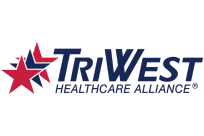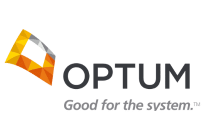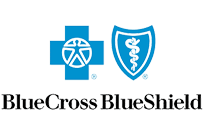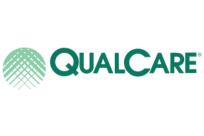Substance abuse can harm your nervous system. Neurofeedback (or EEG biofeedback) is a painless, non-invasive therapy that can help repair those negative effects. Studies have shown neurofeedback can be effective in treating conditions like substance use disorders, depression, PTSD, and ADHD. Learn more about how neurofeedback works.
What Is Neurofeedback?
Neurofeedback is an EEG biofeedback system that helps you learn to regulate your central nervous system. It works by attaching electrodes to your scalp as you and a therapist monitor your brain’s frequencies. You play a video game that rewards you when you produce the desired brain frequencies (by playing the game well). After several neurofeedback sessions, you can actually learn how to change your state of mind. For example, you might learn how to produce fewer of the frequencies tied to depression and anxiety. Dig a little deeper into neurofeedback below.
How Does Neurofeedback Work?
A little information about the brain’s processes can help you understand how neurofeedback (EEG biofeedback) works. The brain is a collection of cells, also known as neurons. These neurons make connections to other neurons throughout the brain and have specific functions.
Neurons produce different kinds of brainwaves, which are classified by how fast or slow they move. Examples of brainwaves include:
- Delta waves – The slowest type of wave; often associated with a sleeping brain.
- Theta waves – Associated with creativity, spontaneity, inattention, and daydreaming.
- Alpha waves – Associated with inner calm and relaxed states of mind.
- Beta waves – Associated with mental activity and focus.
- High beta waves – Associated with peak performance and cognitive activity.
- Gamma waves – Associated with high-level information processing and problem-solving.
An excess or imbalance of certain brainwaves can contribute to a number of issues like impulsiveness, depression, and anxiety.
Brainwaves are measured by electroencephalography (EEG). EEG uses sensitive electrodes placed on the scalp in specific places. This is why neurofeedback is sometimes referred to as EEG biofeedback. Biofeedback is a therapy in which the body’s current state is used to change its future state. Software on a computer compares your brainwave data to a database of other people’s brainwaves. It can then determine if your brainwaves are similar to a healthy ones.
The software to analyze EEG data creates a visual representation of the waves throughout your brain. This is called a brain map. Your neurofeedback therapist uses your brain map to make training protocols to correct imbalances.
Can Neurofeedback Be Useful for Addiction?
Neurofeedback is not only used to measure brainwaves but to train and change them. Research shows that people with addiction have characteristic brainwave imbalances. Not all addictions are the same, though. For example, people addicted to alcohol often have different brain map profiles than those addicted to cocaine.
Once brainwaves are identified as out of balance, they can be trained. This is the fun part of the neurofeedback process. The computer software that collects your brainwaves creates a program or game for you. These games reward you for producing normal waves. It’s designed to challenge you at the right difficulty level. What you’ll see is that you’re either winning the game or losing the game. This is based on whether you’re producing the brainwaves that are being trained.
During neurofeedback, you’ll pay attention to your thoughts, feelings, breathing, and anything else that changes your brainwaves during the game. Being aware of what’s causing the desired brainwaves will allow you to produce these states even when you’re not in neurofeedback training.
Research shows that neurofeedback can retrain the addicted brain to match those without addiction. This training can be an effective relapse prevention tool.
Can Neurofeedback Be Combined with Other Therapies?
Neurofeedback is one tool used in the treatment of addiction. Neurofeedback for addiction treatment is more effective when it’s combined with other therapies, such as psychotherapy and medication-assisted treatment (when appropriate).
While EEG biofeedback addresses deviations in normal brainwaves, psychotherapy can work on abnormal thinking patterns that contribute to addiction. Without addressing the thought patterns associated with substance abuse, treatment is seldom effective. Medication-assisted treatment (MAT) uses specific medications to help treat addiction. MAT can decrease cravings and the likelihood of relapse. It’s used primarily for those struggling with opioid or alcohol addiction.
How Is Neurofeedback Similar to Other Addiction Treatments?
Neurofeedback training aims to change how your brain functions. Psychotropic medications also alter how the brain functions. These can include antidepressants and stimulants, as well as addictive drugs. Some prescription psychotropic medications, such as gabapentin, buprenorphine, Campral, and more, can be used in medication-assisted treatment (MAT) under the supervision of professionals to help those struggling with addiction.
Neurofeedback attempts to permanently change the functioning of the brain. Psychotropic medication temporarily changes the functioning of the brain. If a person stops taking the psychotropic medication, their brain is likely to go back to functioning how it did before the medication. Both medications and neurofeedback have a place in addiction treatment. Sometimes medications are necessary; in other cases, they can be avoided.
It’s worth mentioning that medications can affect neurofeedback readings. This is especially true for psychotropic medications. During neurofeedback sessions, the therapist will likely ask you about the medications you’re currently taking. Be sure to mention them all, so your neurofeedback treatment can be as successful as possible.
If you’re ready to explore treatments for addiction, we can help. Footprints to Recovery offers a combination of traditional therapies and alternative approaches so you can find what best works for you. Contact us today to learn more about addiction treatment options.
- http://eeginfo.com/research/articles/NF%20fr%20Opiate%20Addiction%20Dehghani-Arani.pdf
- https://pubmed.ncbi.nlm.nih.gov/26392114/
- https://pubmed.ncbi.nlm.nih.gov/29890906/
- https://pubmed.ncbi.nlm.nih.gov/29445867/
- https://www.sciencedirect.com/science/article/pii/B9780122437908500080
- https://books.google.com/books?hl=en&lr=&id=PigKJuOSvbMC&oi=fnd&pg=PA241&dq=Neurofeedback+brain+waves+addiction&ots=Aj5bHtYHEm&sig=XZYZn2as7MRibBTOsb_Egxb4gFc#v=onepage&q=Neurofeedback%20brain%20waves%20addiction&f=false
- https://search.proquest.com/openview/a839875293b74a79bb87497b90b8be13/1?pq-origsite=gscholar&cbl=55194
Questions about treatment options?
Our admissions team is available 24/7 to listen to your story and help you get started with the next steps.

